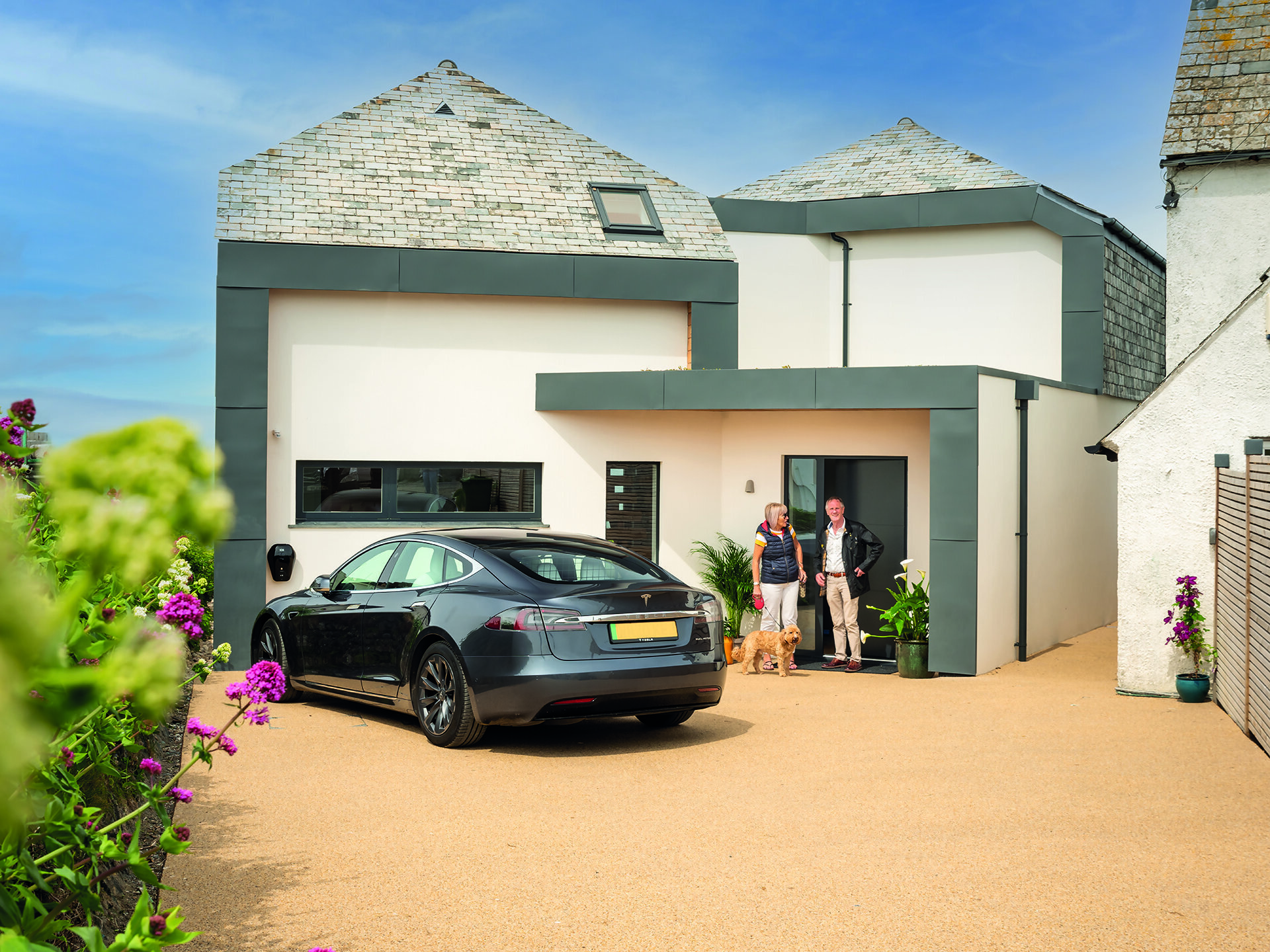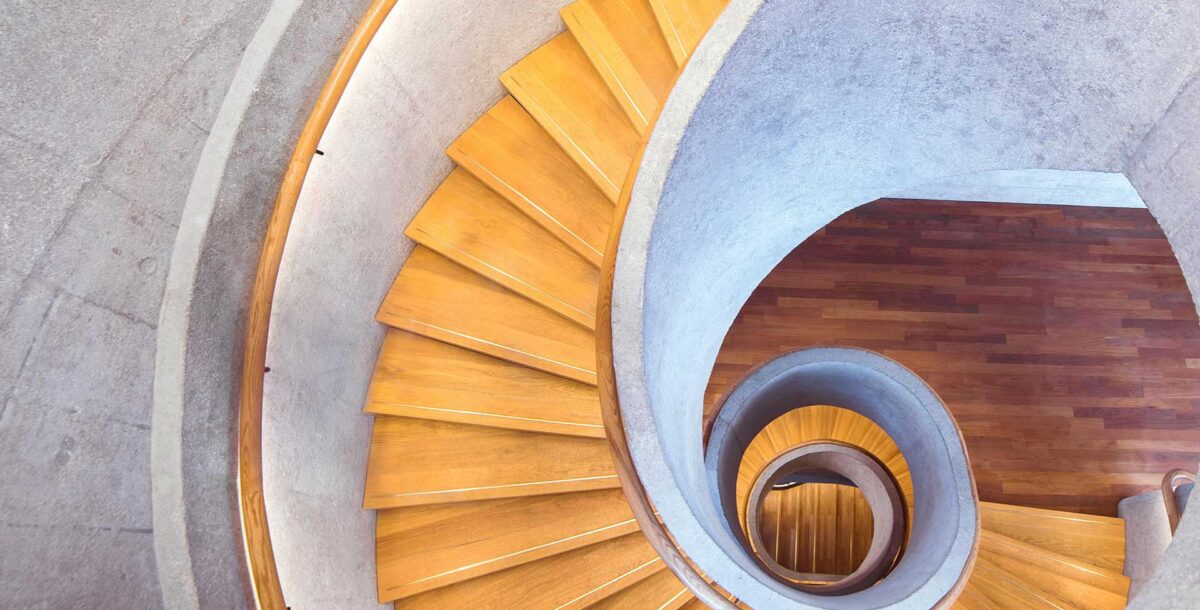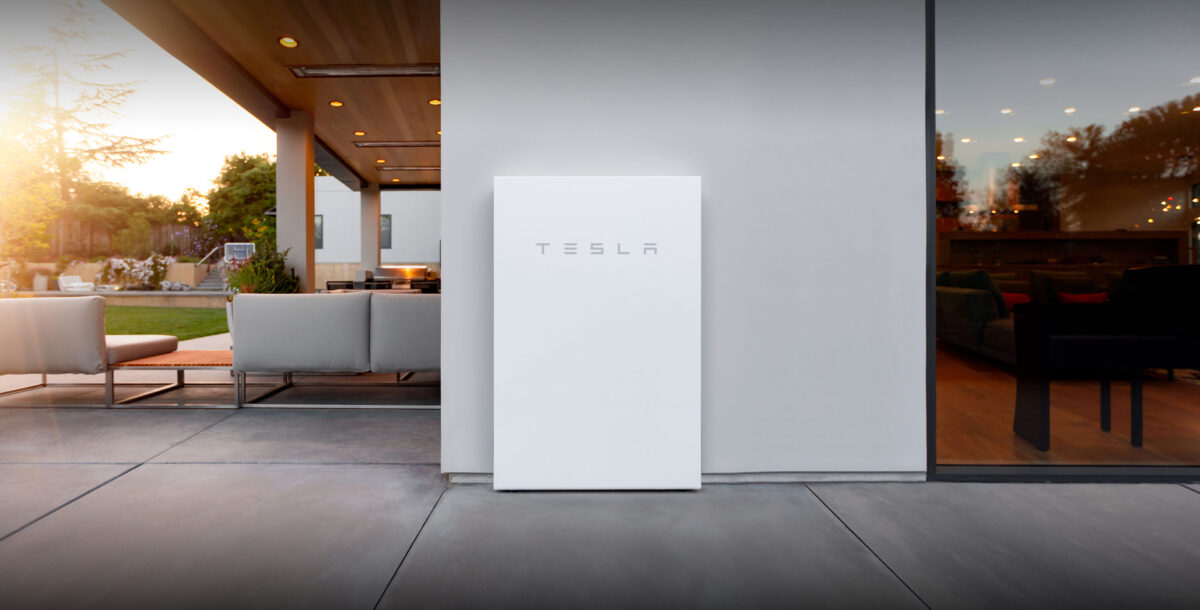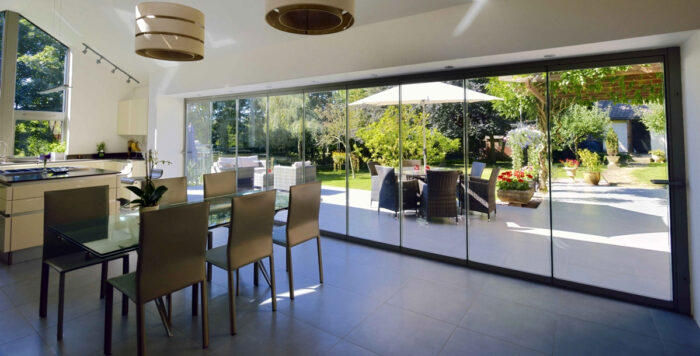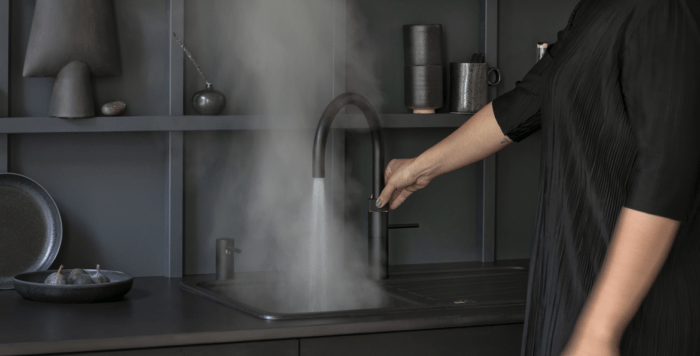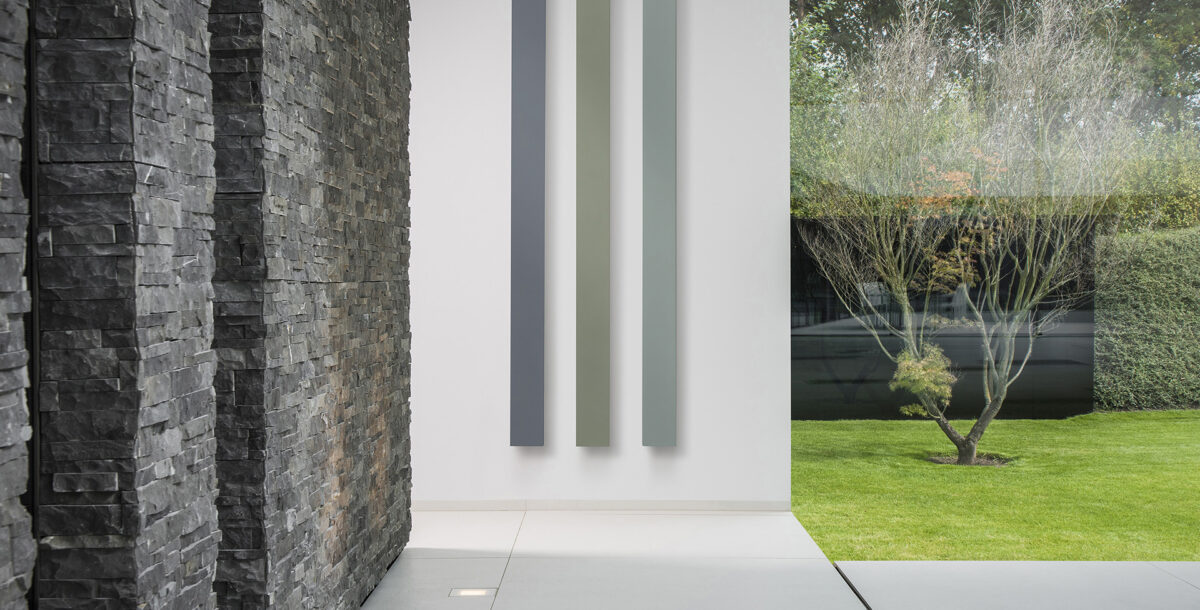Driveways guide – how to choose the right materials and style
You want your driveway to be the best possible complement to your home. Our guide to everything from materials to permeability and planning will help you pick the perfect drive
“Access and connection to highways are a core part of planning permission,” says Charlie Luxton of Charlie Luxton Design. “And, the journey from driveway to front door to entrance hall is an important part of the story. It’s your first impression of the house.”
As Charlie points out, the landscaping around your home, including the driveway, creates an all-important first impression for visitors, so it’s vital you get the right look. There is a multitude of options out there, from the traditional to the contemporary, each with its own pros and cons.
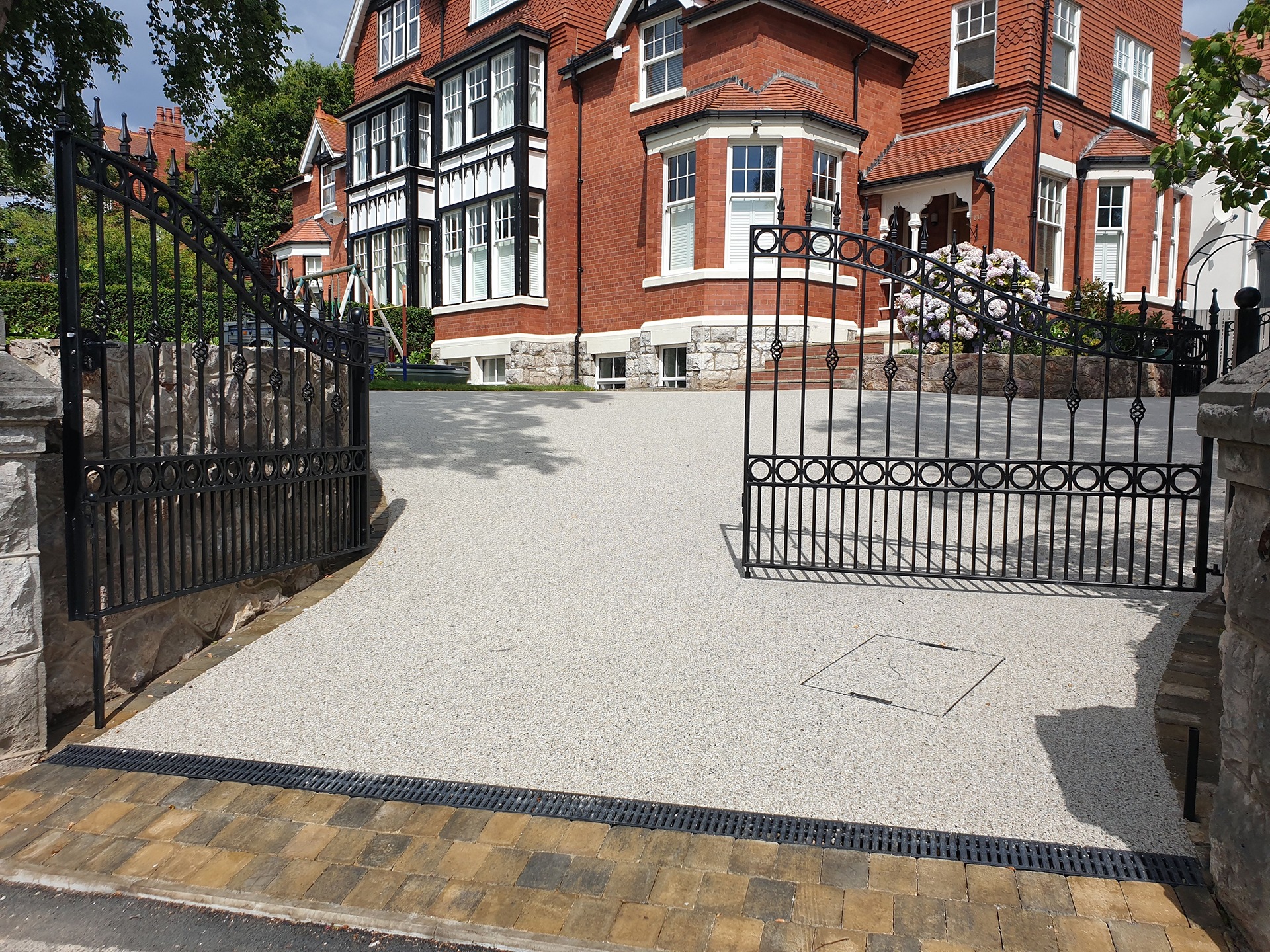
- Image credit: Daltex
Permeable or impermeable?
One of the first decisions you need to take when choosing the material for a driveway today, is whether to go for a permeable surface (a porous surface that lets water drain away through it) or an impermeable surface that water runs off. Permeable surfaces are preferred as a contribution to sustainable drainage.
SuDs
Sustainable drainage is a way to help prevent surface-water flash flooding. The idea is to let as much rainwater as possible soak into the ground near where it falls, rather than directing it all into the public drainage system, which can get overwhelmed during the increasingly heavy storms we are experiencing thanks to climate change.
Benjamin Birkhead, from Marshalls says, “Adopting SuDs when designing and constructing homes is crucial in flood mitigation and the targeting of surface-water run-off. These solutions can appear both above ground, as permeable paving, or as below-ground drainage solutions that can hold and distribute collected water when appropriate.” John Pearce, from permeable resin-bound driveway company Oltco that laid the driveway pictured at the top of this story, explains, “SuDs-compliant driveways are a testament to sustainable urban development. By allowing rainwater to permeate through the surface, they mitigate flooding and reduce the strain on drainage systems. This not only enhances environmental resilience but contributes to the creation of greener, more environmentally-friendly communities.”
Soakaways
Permeable paving is in vogue and it is indeed a great way to enable rainwater to be absorbed back into the ground where it falls. But, as Benjamin suggests, impermeable surfaces can be made SuDs compliant too. A Tarmac drive could be designed with a fall to direct rainwater into a channel leading to a soakaway hole in the ground. Or block paving can be laid with wider than usual gaps, filled with a porous material (rather than solid concrete) between the blocks, and a sub-pavement structure designed to let water soak away. There are lots of different ways to achieve the same goal.
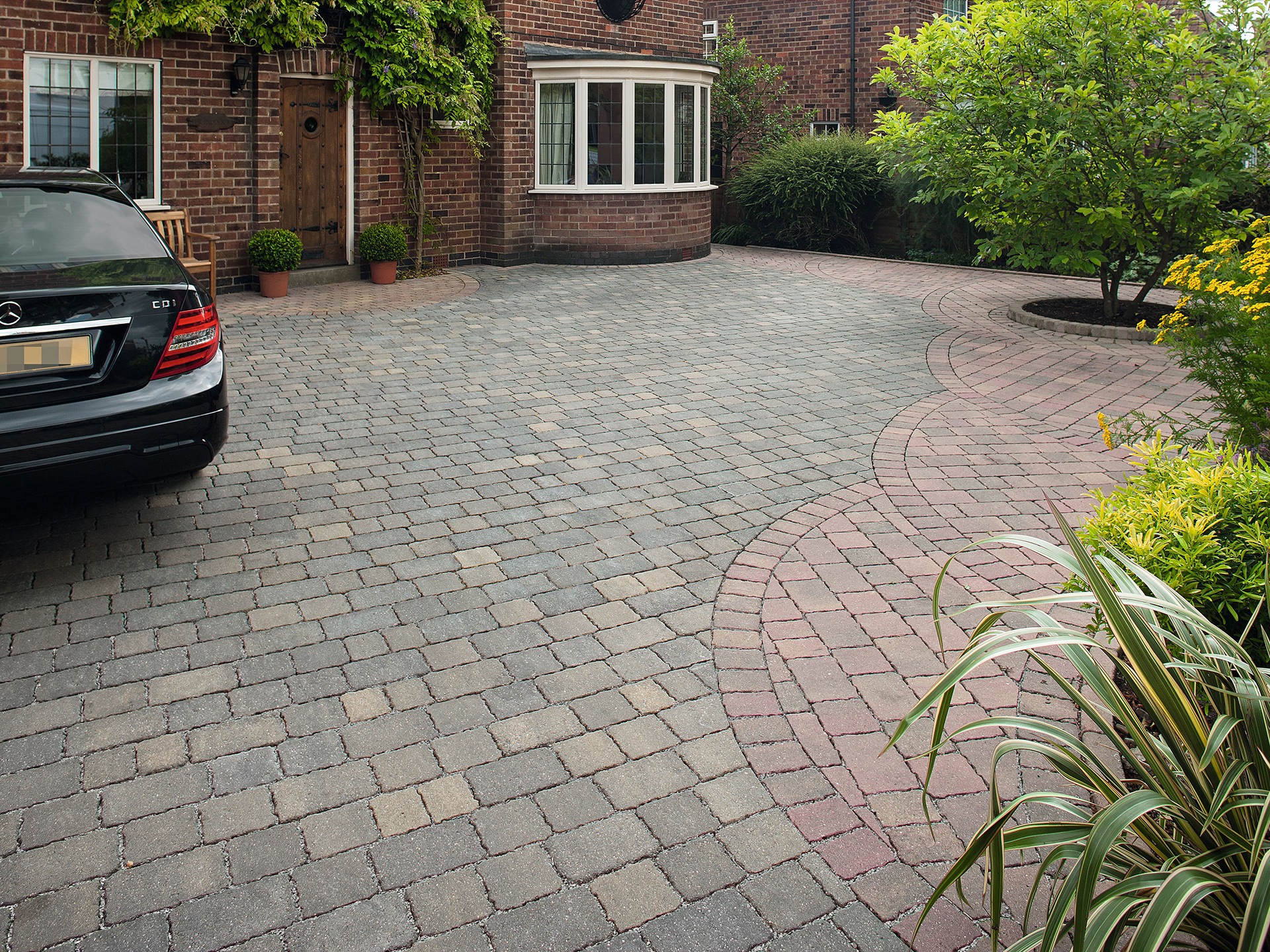
- Image credit: Marshalls
Preparation is key
When you’re making a driveway, the “surface course” – the bit you can see – is only part of the story. “Eighty per cent of the cost relates to the bits you don’t see – the sub-base and ground preparation. Only 20 per cent goes on the paving or other driveway materials,” says Anna Hampshire, from Marshalls. “An upgrade to the surface may have less impact on the overall cost than you think. But it will have a big impact on the finish and style.”
The base is usually 100-150mm of hardcore. A layer of a special porous, woven geotextile may be laid underneath, particularly on heavy soils. The idea is it stops the rocks from the sub-base migrating down into the soil over time, making the finished driveway more stable and longer-lasting. On a building plot, if you can, it’s a good idea to get the hardcore layer of your driveway in place as early as possible. This will provide a surface for heavy machinery to drive on, and help stop your site turning into a sea of mud. But this will necessitate getting the drains in place first.
So what are the choices for driveway materials?
Gravel
Gravel is still a popular choice. It’s water permeable and has a natural look. It’s also likely to be one of your cheapest options. You can choose from various stones from shingle to tough granite, and colours from gold to grey. Traditional loose gravel is usually put down in three or four layers. Each one is rolled then left for a day to settle. Cheaper quotes might only include two layers.
To keep gravel in place, you can fit a cellular plastic grid of gravel-stabilisation ‘tiles’ (with or without a membrane backing for weed control), such as those made by Gravelrings. “These allow you to drive over the gravel without compacting it. And they stop the stones moving when you turn on it,” says Rob Pollard of RX Architects. The stones will still need topping up from time to time, and gravel is not a good choice for steep slopes or areas that get heavy snowfall. (It can be hard to clear a gravel driveway of snow.)
Resin-bound gravel
Resin-bound gravel is a fashionable, low-maintenance choice for driveways. It has a smoother appearance than loose gravel, with the small stones set in place. There are two types of driveway fixed with resin: resin bonded and resin bound. Sam Buckley of Daltex, which makes both, explains the difference like this, “Resin-bound aggregates are mixed with resin and trowelled to create a uniform, flat surface that is porous and SuDs compliant. Resin-bonded involves scattering aggregates onto resin, and has the appearance of loose gravel. Most of the aggregate will adhere to the resin, but some will remain loose. Resin-bonded surfaces are not porous.” Resin-bound and bonded driveways are available in a range of different colours, according to the colour of the aggregate (small stones) used. It can often be laid on top of existing Tarmac or concrete.
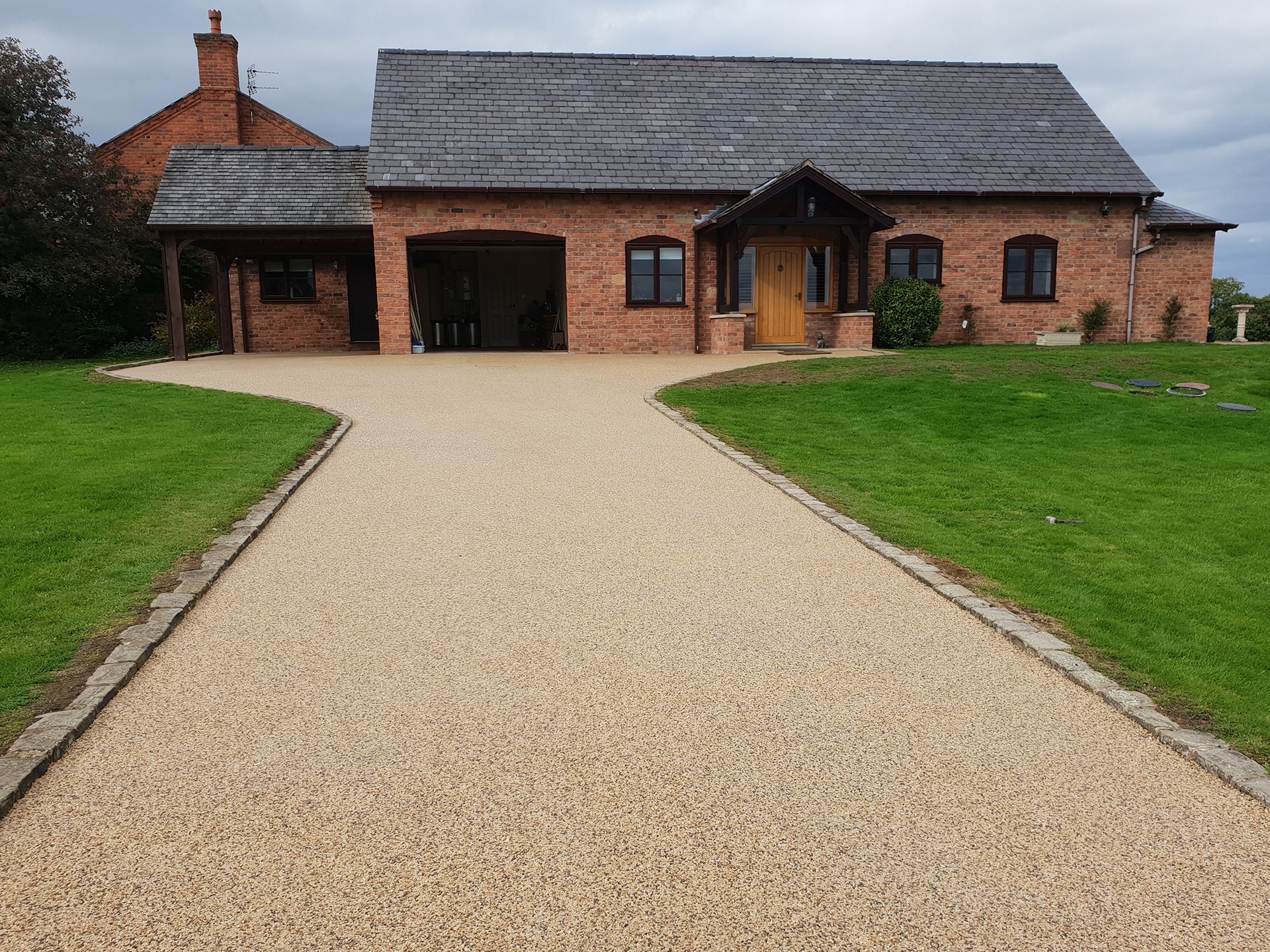
- Image credit: Daltex
Self-binding gravel
Another option is self-binding gravel. This is a mixture of small gravel, gravel dust, sand and clay, which bonds firmly when compacted.
Block paving
Hardwearing block paving comes in natural stone, clay, or as more affordable concrete blocks. Roughly square or rectangular quarried blocks of stone are known as setts. “Concrete blocks are a great option for those looking for something low maintenance. It is easy to keep clean and products from quality manufacturers are durable and long-lasting,” says Anna Hampshire at Marshalls. It’s always best to see samples of paving blocks before buying. And be aware that the blocks will appear different to an individual sample when laid in quantity. Reclaimed stone setts are a sustainable choice.
Laying pattern options include random course, stretcher bond and herringbone. Herringbone is practical as the interlocking blocks won’t be shift out of position when cars brake and turn. Cubes can be used to create decorative fan patterns. For a uniform look, cover the driveway, pathways, and steps with the same design. Or make things more interesting by altering the size or laying pattern.
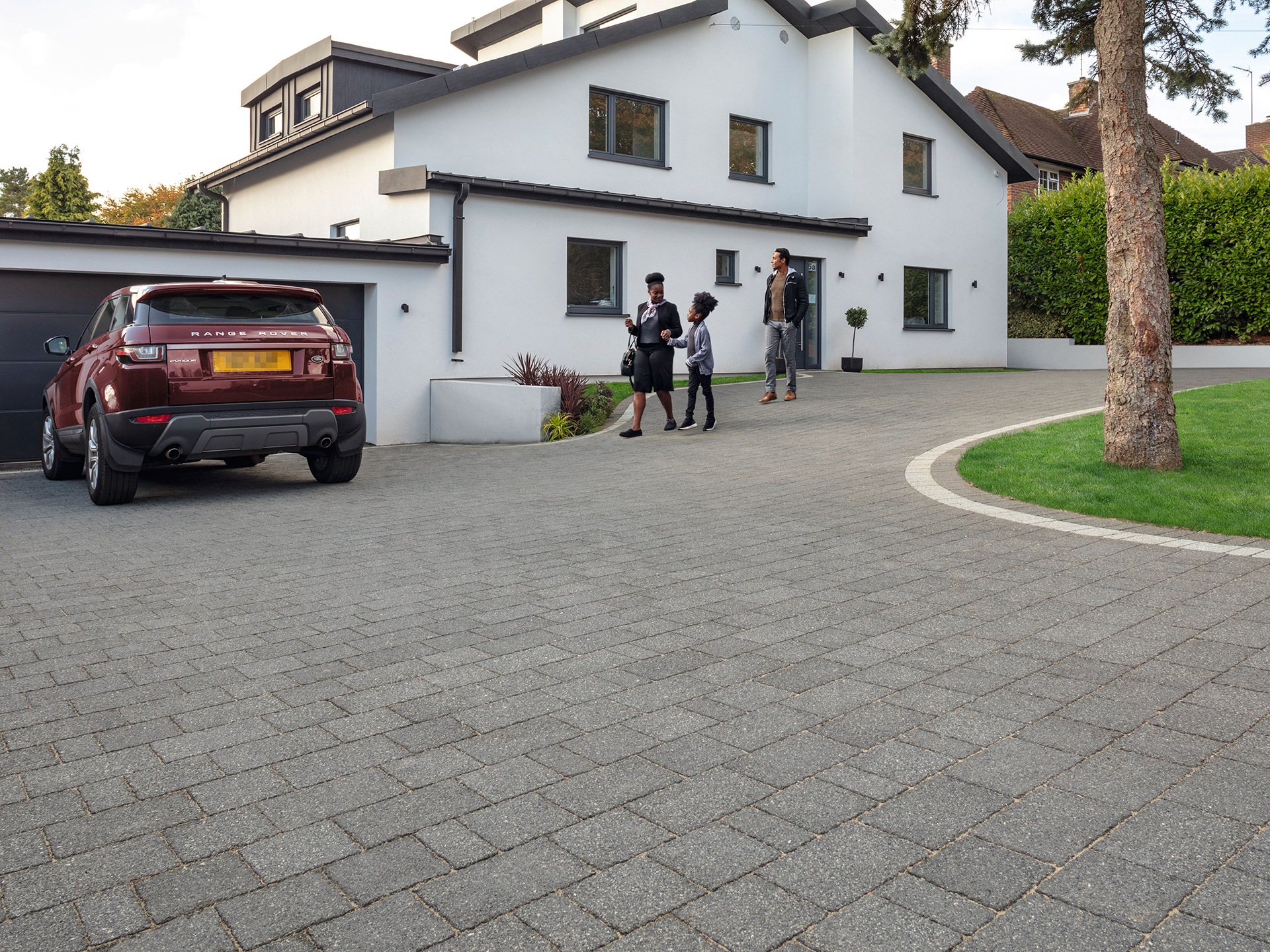
- Image credit: Marshalls
Flag stones and slabs
Stone slabs can look traditional and bring a beautiful natural feel. If you decide to go with natural stone flags, check they are strong enough for driveways, as the thinner versions for use on patios could crack under the weight of vehicles. Take advice from the supplier. And take advice on the sub-base you will need too, as getting that part right is vital when laying flagstones.
Porcelain slabs
A style of driveway that’s fashionable at the moment is the sleek look of porcelain slabs. Porcelain tiles can be super strong. Make sure you choose ones that are purpose made for driveways, non-slip, and printed with UV-resistant ink.
Poured concrete
Concrete is a relatively cheap option if you favour an “old school”, utilitarian look. A depth of 100mm of PAV 1/C30 is the standard format. It shouldn’t need reinforcing. But you will need expansion joints to accommodate movement in the slab or the earth beneath it.
Pattern-imprinted concrete
Pattern-imprinted concrete does what is says on the can: a pattern is created in the surface of the wet concrete using dies. It is usually made to look like some kind of block paving – crazy paving, cobble stones, brick fan-work etc. It comes in a whole range of colours and has a slight sheen to it. Pattern-imprinted concrete can crack in freezing conditions, unless fitted with control joints, which will interrupt the pattern. It can get slippery, and the colour and pattern can wear and fade. Plus, you’ve got a problem if you need to take up an area for any reason.
Tarmac and asphalt
Tarmac is a layer of crushed stone coated with tar, then compacted with a vibrating roller. Tarmac is an easy, quick and practical driveway option: suitable for all weathers, and for sloping sites, and able to be laid on top of existing surfaces. You’ll need to set kerbstones round the edge, and, in terms of the Tarmac itself, you’re after an 80mm base layer with a 35mm wearing course on top. Bear in mind that any ridiculously cheap quote you get is likely too good to be true, and probably won’t deliver these depths.
An increasingly popular alternative to Tarmac is bitmac which replaces the tar with bitumen. This is less easy to damage with spills of diesel or petrol. Asphalt is another possibility. It looks very much like Tarmac, but is made from bitumen mixed with less, smaller aggregate. It’s smoother, more hardwearing, less likely to be stained by fuel spills, and less likely to crack. Unlike Tarmac, asphalt can be scraped off the ground and reused at the end of its life. Porous asphalt is now available, too.
Turf systems
Grass, the ultimate eco-friendly choice, can be grown through protective grids of plastic or concrete cells, such as Marshall’s Grassguard system, Groundtrax, or Grasscrete. Permeable systems like these make the ground strong enough to take the weight of vehicles all year round, while allowing the grass to grow.
Planning permission
Generally, neither building regs nor planning permission apply to driveways, but there are exceptions to this rule:
- if you want to pave over your front garden, special rules apply
- if you live in flats or maisonettes
- if you live in a house created through change of use under ‘permitted development’
- if there is a planning condition on your plot
- if you live in a listed building, or an Article 4 Direction area or other area that limits permitted development rights
- to meet building regs, you need to be sure not to make access to your house more difficult than it was before. So, for example, changing levels to add steps where none existed before would be a problem
You can read the rules about driveways and planning on the Planning Portal.
You will need to apply your council if you want to get a section of kerb dropped to facilitate access to your new driveway from the road.

- Image credit: Daltex
Heated driveways
One last idea to consider: if you live in an area that gets a lot of frost and snow, it might be worth thinking about investing in a heated driveway. Bo Nielsen, of Heated Driveway Systems, gave us the lowdown:
- Driveway-heating systems can be fitted under all solid surfaces such as Tarmac, block paving, paving slabs and concrete. They cannot be fitted under gravel, without first covering the system with concrete or Tarmac. I recommend fitting drain channels so all the meltwater can run away.
- Both mat and cable systems are available. The former is much easier to fit, especially if your builder or electrician will be doing the installation.
- If you use a specialist company, your building or groundwork contractor will usually do all the preparation, then lay the surface finish on top of the system afterwards.
- A fully automatic controller using moisture sensors and temperature sensors determines when the system needs to be on. It must be wired into the mains electrics by a qualified electrician. Heating cables and 15m cold leads are triple insulated for safety.
- Normally, the driveway surface will reach a temperature of 5-10°C. The programming can be changed to make the system as efficient as possible.
- It’s maintenance-free, but you should avoid damage to the driveway surface that exposes the cables.

